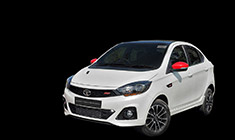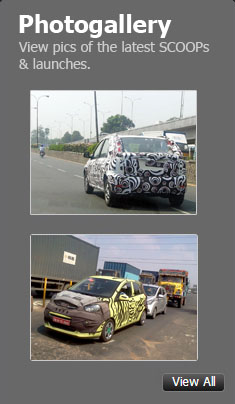News
How I developed a DIY solution to help park my cars in a tight space
Although the new house had most of what we would want, it was lacking two parking slots.
BHPian apocalypse recently shared this with other enthusiasts.
DIY: A Parking Fuse:
This is a story of a DIY done to enhance our parking experience at home – sharing a solution of a very “first-world” problem, in case it provides joy to any other member to do a weekend DIY themselves. This is a DIY which helped me make it easy to park our cars with very tight clearances, everyday, without risk of bumping our own car - causing ourselves double loss.

Avoiding parking on the road:
My and my significant other both commute to our respective workplaces in separate cars, and often come back late in the evening, especially if there is a situation at work. It is uncertain who reaches home first.
We recently moved to a new house, a rented one, after weeks of looking for a place. Although the house had most of what we would want, it was lacking two parking slots. Although it is possible to park one car on the road, we would rather keep both parked inside the safety of the compound.
One long slot – tight clearances:
What we did have, though, was a long parking slot – although it was designed for only one car, we could fit two cars one behind the other. Whoever comes first parks further forward, whoever comes second parks behind.
Unfortunately, clearances on all sides are very tight. I have tried to express this in the diagram below:

On the north side, there needs to be enough clearance for the security guard to access the washroom, especially while carrying a bucket. After a consultation with our kind and accommodating security guard, it was easy and risk-free to ensure that the front car left adequate space to access the washroom.
With this space for the access path kept on the north side, the gate has a very tight clearance with the rear of the Honda City on the south side. This is a little more tricky – the clearance is very tight – within a couple of inches.
Risk of Collision:
Now this leads to a situation where every time the Honda City is brought home, we need to squeeze the cars as close as possible to ensure that the gate closes.
Although we are both experienced drivers, the hoods of both of our cars are not easily visible, and although we should be incident free 99 out of 100 times, the one incident happening where one of us bumps the car in front is going to be an expensive one. The risk is especially higher if one is tired and in a hurry to go home.
Because this is something we do everyday, the probability that we get at least one incident in a year is quite high. Toss a dice a hundred times, you’re almost certain to get a 6 atleast once. The below math shows that even with a 0.5% chance of an accident in one parking event, the chances that we have atleast one accident in a year is 83%.

With this knowledge, there is some anxiety every time one comes home last, having to be super careful, at a heightened state of alertness to park. Not the best experience for coming home.
Sometimes, the security guard is there to help guide while parking, though often not.
What now?
We now had two options:
- Park one car outside on a daily basis – very likely should be okay, but we have never done this. Park both cars inside only during times we are travelling.
- Park both cars inside while being super careful – perhaps getting down to double check clearance in the absence of a security guard
Is there an option 3?
Enter Option 3: My DIY Parking Fuse:
The idea struck from the inspiration that electrical devices are connected via a fuse – a very low tolerance object which gets fried with excess current, blocking further flow – better to fry a 100 rupee object than an expensive electronic appliance connected downstream.
Using PVC pipes, I built a thin lightweight structure – our Parking “Fuse” which could be placed behind the front car. Whoever arrives home first parks, and places the Fuse a few inches behind the front car. Whoever arrives second, drives straight into the Fuse at a slow speed until the fuse shakes.


The structure is made using 0.5 inch thick (inner diameter) PVC pipes, with additional L and T joints, attached with PVC sealant. The entire project costed a few hundred rupees, purchased from the first hardware shop I walked into. I could have used some fancy, less easily available joints to make the design simpler, but stuck to using T and L joints which were the only ones the good fellow had. I used smaller pipe sections to make the stand.


The width is approximately 3 feet, and the height is approximately 4 feet (to allow easy visibility above the hood and the increased height makes it sway more when bumped). The critical part is the vertical pipe in the middle – because the middle of the front grille is the first to touch (all cars have a curved front grille).

With the slightest contact between the incoming car and the fuse, the fuse shakes violently, and is easily visible to the driver of the incoming car – this is when you know you need to stop.

Built using ultra light and flimsy PVC pipes, even if the fuse shakes and hits the car in front, it causes no damage.
With this, parking into our slot for both cars became effortless and de-risked, while ensuring a precise and small gap between both cars, every time we park, consistently.
Although this has improved our experience of parking both cars inside, I anticipate that we may run into issues when our parking slot neighbours get bigger vehicles, our rear vehicle is going to obstruct them, and we will be forced to park outside. When that day comes, I will need to keep one car outside. We will cross that bridge when it comes; after all nothing is permanent.
Check out BHPian comments for more insights and information.
- Tags:
- Indian
- Member Content
- car parking
- DIY






 (1).jpg)











